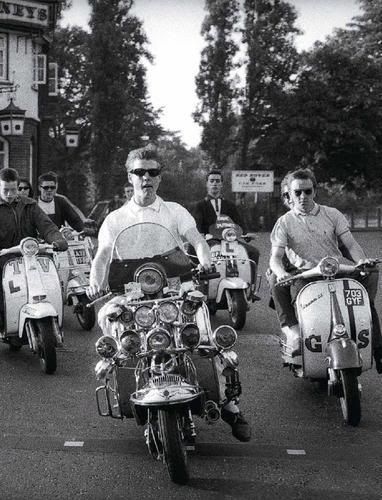







My Recollections of 1958 through 1960...
... do not include a consciousness of Herb Caen's so called beatnik culture in the coffee houses we habituated in San Francisco's North Beach. We only knew a lot of older guys had beards and were poets. No one but Herb (Pulitzar Prize-winning columnist and three-dot journalist who coined the word beatnik) and his readers knew what a "beatnik" was, certainly not our crowd of sons of yacht club commodores, bill collectors and disbarred Melvin-Belli-employed attorneys did not; we were mostly San Rafael Military Academy students. Jack who? On The Road? Wut road? Oblivious. Later, with the summer-of-love, some tied their futures to rock and roll, and a couple succumbed to unrestraint.
Of living in a 1960 London, Nottinghill Gate walk-up, I remember Carmelita Bird, an aging American expat hooker from Sausalito, CA, living with her door wide open to any passing traffic on the third floor below me, of a coin-in-the-slot gas heater in my chilly flat, and of riding the bus to work at the ice rink's skate hire, featuring Apfel Ankle Supports. I did not own a motor scooter while living in London. My hair was cut "short back and sides". My shoes were not pointy but were big black horsehide wing-tips.
I knew nothing of Mod, nor Hip nor the Mersey river; I was just a nineteen-year-old kid having a fun adventure in a big city. As for music, being ignorant of mods and rockers, I was OK with Elvis, The Kingston Trio and enjoyed the musical play Westside Story in London's West End. Rock was Jerry Lee Lewis and the Big Bopper. I thought Pat Boone was a dork. In 1960, at my girl friend's behest, I "test rode" a Vespa at Al Fergoda's in San Francisco, pillion to a suicidal Italian scooter salesman. Instead of buying that $375 Vespa I sailed to Australia and bought a used 70cc 2 cycle Yamaha road bike... I am often stubborn. If only I had listened to her. Oh well.
In 1960, at my girl friend's behest, I "test rode" a Vespa at Al Fergoda's in San Francisco, pillion to a suicidal Italian scooter salesman. Instead of buying that $375 Vespa I sailed to Australia and bought a used 70cc 2 cycle Yamaha road bike... I am often stubborn. If only I had listened to her. Oh well.








Some History of Mod
from Wikipedia
Dick Hebdige claims that the progenitors of the mod subculture "appear to have been a group of working class dandies, possibly descended from the devotees of the Italianite [fashion] style." Mary Anne Long disagrees, stating that "first hand accounts and contemporary theorists point to the Jewish upper-working or middle-class of London's East End and suburbs." Sociologist Simon Frith asserts that the mod subculture had its roots in the 1950s beatnik coffee bar culture, which catered to art school students in the radical bohemian scene in London. Steve Sparks, who claims to be one of the original mods, agrees that before mod became commercialised, it was essentially an extension of the beatnik culture: "It comes from ‘modernist’, it was to do with modern jazz and to do with Sartre" and existentialism. Sparks argues that "Mod has been much misunderstood... as this working-class, scooter-riding precursor of skinheads."Coffee bars were attractive to youths, because in contrast to typical British pubs, which closed at about 11 pm, they were open until the early hours of the morning. Coffee bars had jukeboxes, which in some cases reserved some of the space in the machines for the students' own records. In the late 1950s, coffee bars were associated with jazz and blues, but in the early 1960s, they began playing more R&B music. Frith notes that although coffee bars were originally aimed at middle-class art school students, they began to facilitate an intermixing of youths from different backgrounds and classes. At these venues, which Frith calls the "first sign of the youth movement", youths would meet collectors of R&B and blues records, who introduced them to new types of African-American music, which the teens were attracted to for its rawness and authenticity. They also watched French and Italian art films and read Italian magazines to look for style ideas. According to Hebdige, the mod subculture gradually accumulated the identifying symbols that later came to be associated with the scene, such as scooters, amphetamine pills, and music.














"... aging expat hooker..."
ReplyDeleteYou didn't?
No.
ReplyDelete